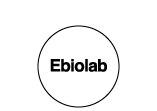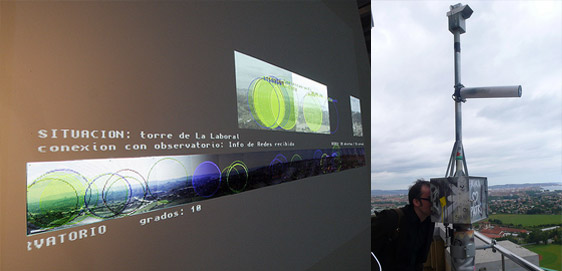

Observatorio, (Observatory), 2008
Boj ,Clara & Díaz, Diego
Interactive installation
One of our previous projects called “Red Libre Red Visible” (Free Network, Visible Network). Begun in 2004, it reflected on hybrid public space and supported free network social movements. It arose at a time when it seemed possible to achieve the Utopia of a system of wireless, open communication networks managed by social groups offering services to the local community. Thus, a public environment would have been created around them, fostering participation in voluntary organizations, communication, and exchanges among local residents (…). At that time, several city governments began to offer free access to the WiFi network or to foster projects to broaden the coverage area, gradually offering access to the entire city. However, the CMT (Telecommunications Market Commission) denounced those city governments for unfair competition with telecommunications companies (…). Given that situation, all the municipal projects offering WiFi networks were cancelled, leaving the free network groups to handle the tasks of installing, maintaining and extending open WiFi networks throughout Spain (…).

Today, some companies have started to employ other tactics arising from the new situation. These strategies are based on the deceptive slogan “Share your WiFi” and include FON, criticized for its aggressive commercial approach, or the recent Whisher and Wefi projects. These companies have realized that the current infrastructure of access nodes to the Internet in our cities could provide coverage to the whole city if it were an open, shared structure, given that a large number of isolated nodes already exist that could be reordered, creating the global network that was the aim of the Free Networks groups (…).
Obervatorio is a project that aims to contribute a reflection on the scenario described above, informing viewers about the current state of wireless networks located in the area where it is installed. It comprises of a device located in urban space that tracks and shows the networks in real time and sends this information to the exhibition hall, where it is displayed. A modification of these networks is also offered, showing an ideal configuration in which the local residents of large areas in the city could gain or share access to it.
In a public square still to be determined, we will install the lookout device. It comprises a high power uni-directional WiFi antenna with a 30º aperture, able to detect wireless networks within several kilometres; a video surveillance camera with a telephoto lens with the same aperture as the WiFi antenna; and a viewer which, like a periscope, offers a real time image taken by the camera, with the WiFi networks detected by the antenna placed geographically on it.
